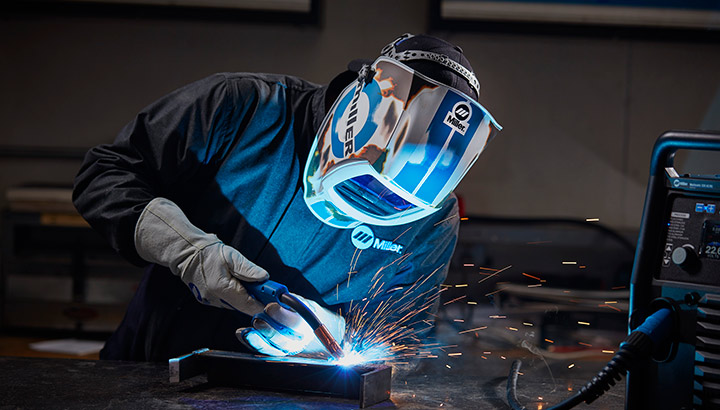Welding WPS Explained: Secret Elements and Perks for Your Welding Processes
Welding WPS Explained: Secret Elements and Perks for Your Welding Processes
Blog Article
The Ultimate Guide to Welding WPS Procedures: A Comprehensive Summary for Welders
In the elaborate globe of welding, Welding Procedure Specs (WPS) serve as the backbone of ensuring quality, consistency, and security in welding procedures (welding WPS). As we delve into the numerous parts of a WPS and explore the details of certification and certification, we will uncover the important role these treatments play in the world of welding.
Significance of WPS Procedures
Comprehending the importance of Welding Procedure Specs (WPS) treatments is vital for ensuring the top quality and integrity of bonded structures. WPS treatments work as a roadmap for welders, outlining the necessary actions, parameters, and products needed to accomplish a sound weld. By sticking to WPS standards, welders can make certain uniformity in their work, bring about structurally sound and trustworthy welds.
One of the key reasons why WPS treatments are necessary is their duty in keeping weld quality and integrity. Adhering to the defined welding parameters and techniques detailed in the WPS aids protect against issues such as porosity, cracking, or incomplete blend, which can jeopardize the stamina and resilience of the weld. Additionally, WPS procedures are crucial for guaranteeing compliance with sector standards and codes. By complying with well established WPS guidelines, welders can show that their work meets the required needs for safety and high quality, providing guarantee to clients, examiners, and governing bodies. Essentially, the significance of WPS treatments can not be overemphasized, as they are basic to accomplishing regular, premium welds that meet sector standards and requirements.

Components of a WPS
A Welding Treatment Spec (WPS) generally makes up crucial elements that detail the particular requirements for carrying out a weld, making sure uniformity and high quality in the welding process. The essential parts of a WPS consist of crucial variables such as base steels, filler steels, preheat and interpass temperature levels, welding procedures, shielding gases, welding settings, and post-weld warmth therapy needs.
Base steels describe the products being joined, while filler steels are made use of to fill the void in between the base metals throughout welding. Preheat and interpass temperature levels are important for managing the heat input and protecting against problems like fracturing or distortion. The welding procedure outlines the certain method to be utilized, whether it's gas metal arc welding (GMAW), shielded metal arc welding (SMAW), or an additional technique. Protecting gases safeguard the weld pool from climatic contamination. Welding settings specify the positionings in which welding can be carried out. Post-weld warmth therapy may be essential to alleviate tensions and enhance the weld's residential or commercial properties. A detailed understanding of these elements is vital for developing a detailed and reliable WPS.

Qualification and Certification
Having actually developed the vital parts of a Welding Treatment Specification (WPS), the focus currently changes towards the crucial aspects of certification and certification in welding methods.

Accreditation, on the various other hand, is the official recognition of a welder's certifications by a pertinent qualification body or company. Welding accreditations are commonly based on the specific welding processes, materials, and settings a welder is qualified to deal with. Holding a legitimate welding qualification demonstrates that a welder meets sector criteria and is skilled to execute welding jobs to the needed requirements.
Developing a WPS
To create a Welding Procedure Specification (WPS) that fulfills sector criteria, cautious factor to consider of welding procedures, materials, and operational parameters is necessary. The first step in creating a WPS is to determine the welding procedure to be used, such as gas metal arc welding (GMAW) or protected steel arc welding (SMAW)

Executing and Keeping Track Of WPS
Upon finalizing the extensive Welding Treatment Spec check this (WPS) that meticulously information welding procedures, materials, operational parameters, and quality guarantee procedures, the emphasis shifts to properly executing and keeping an eye on the well-known treatments. Application includes making sure that all welders included in the task know with the WPS and follow it diligently during the welding process. This requires giving adequate training and guidance to assure adherence to the defined treatments. Keeping an eye on the WPS includes constant oversight to verify that welding activities line up with the recorded specifications. Assessments, screening, and quality assurance measures are vital components of the monitoring process to recognize any deviations or issues without delay. Regular audits and reviews of the welding procedures help in maintaining uniformity and top quality throughout the task. Reliable implementation and surveillance of the WPS are crucial for making sure the stability, read this post here toughness, and safety and security of the bonded joints, ultimately adding to the general success of the welding project.
Conclusion
To conclude, understanding and following Welding Treatment Requirements (WPS) is critical for welders to guarantee high quality, consistency, and safety and security in their job. By knowing the parts of a WPS, obtaining appropriate credentials and certifications, creating detailed treatments, and implementing and checking them properly, welders can enhance their skills and proficiency in welding techniques. Following WPS treatments is crucial for producing high-quality welds and meeting industry requirements.
In the intricate world of welding, Welding Procedure Specs (WPS) offer as the backbone of ensuring quality, uniformity, and security in welding operations. The welding procedure describes the specific strategy to be made use of, whether it's gas metal arc welding (GMAW), shielded metal arc welding (SMAW), additional info or another method.To establish a Welding Procedure Requirements (WPS) that fulfills industry criteria, mindful factor to consider of welding procedures, materials, and functional parameters is essential. The initial action in developing a WPS is to determine the welding process to be used, such as gas steel arc welding (GMAW) or protected steel arc welding (SMAW)Upon completing the thorough Welding Procedure Spec (WPS) that carefully information welding procedures, materials, functional specifications, and top quality assurance procedures, the focus moves to properly carrying out and monitoring the established procedures.
Report this page